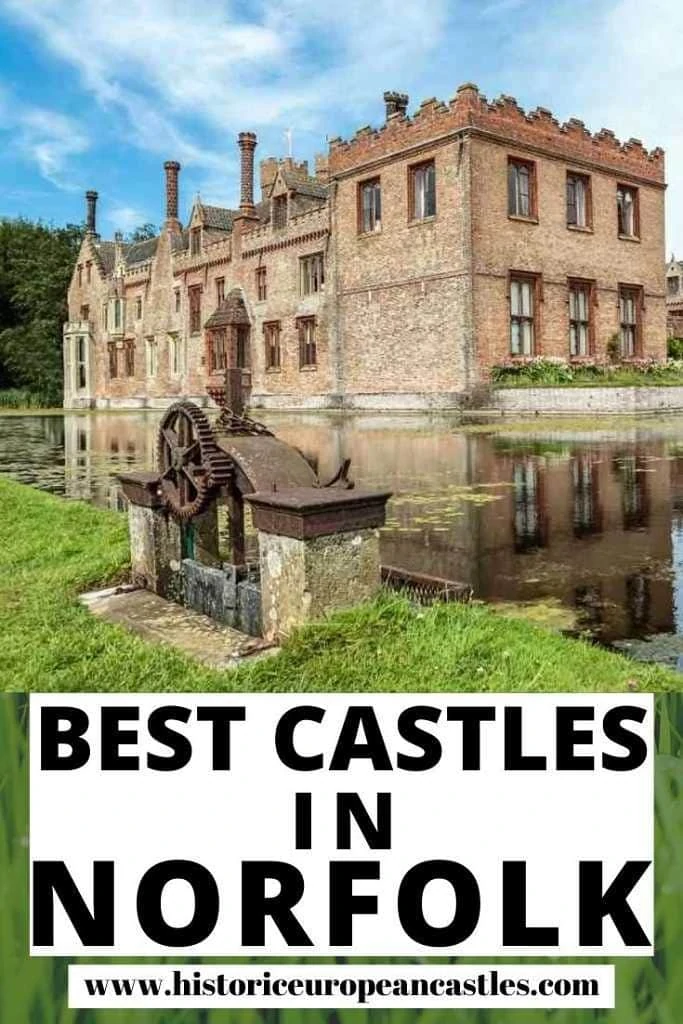The county of Norfolk is home to some of the most gorgeous natural landscapes in the entirety of England; with its peaceful and quintessentially English towns and villages, its cosy beaches, and winding country lanes, it is one of the most charming and laid-back regions of the country and attracts a huge number of visitors each and every year.
In addition to these qualities, there is also an abundance of history present in Norfolk, such as a series of historic castles; here are the best castles to visit in the Norfolk:

The Best 7 Castles to Visit in Norfolk
1. Baconsthorpe Castle
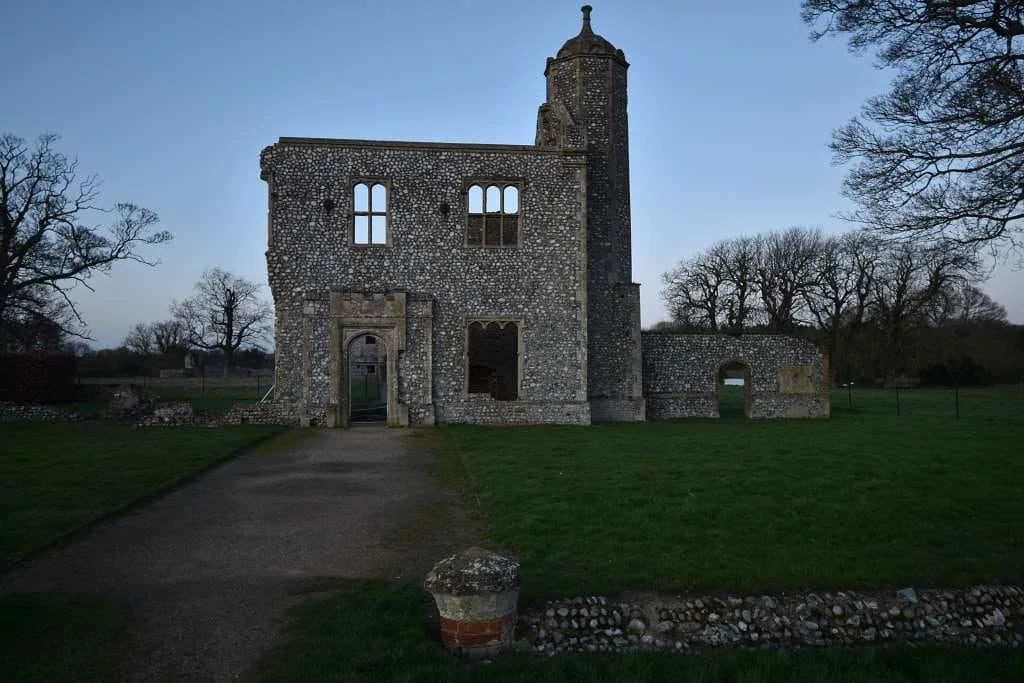
Located nearby to the village of Baconsthorpe in Norfolk, lies the ruined fortified manor house, Baconsthorpe Castle.
The castle’s history began in the 15th century, whereby the prominent local Heydon family established it; the castle continued to be developed by the heir of the family John Heydon I, who modernised it, fortified it, and wielding large amounts of power.
During the 1940s, the castle was eventually given to the Ministry of Public Works, and it was later opened to the general public; today, it is a Grade I and Grade II listed building, and also is a scheduled monument.
Where: Baconsthorpe
When: 15th century
Style: Medieval
Open for visit: Yes. Click here for more information.
2. Burgh Castle
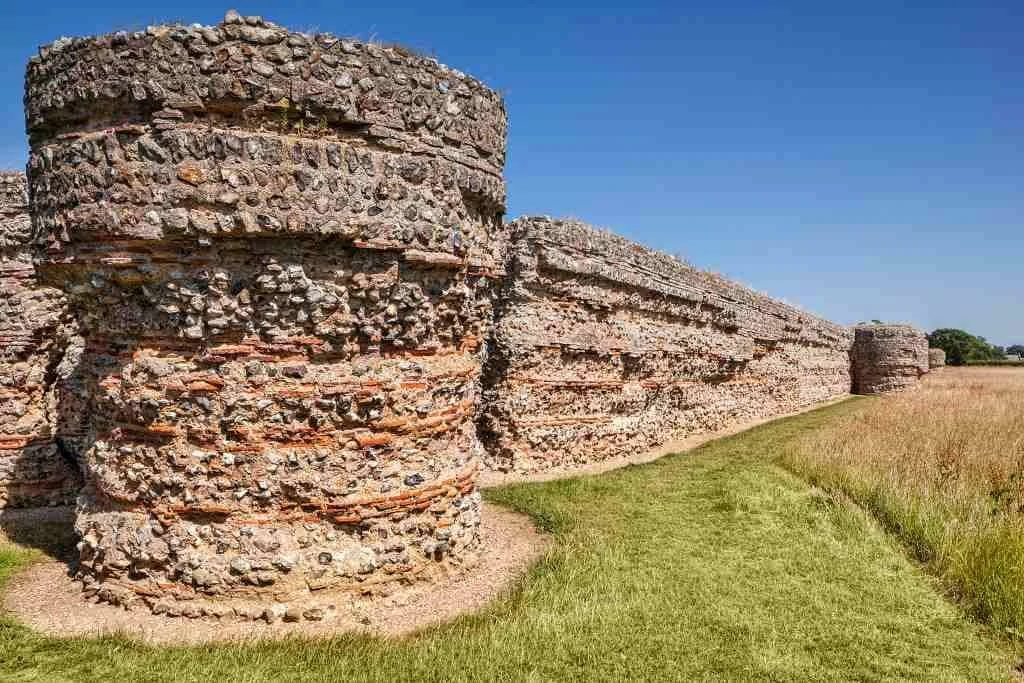
The fantastic Burgh Castle is a historic shore fort that dates back to the Roman era, specifically the 3rd century, whereby it was constructed as a defence system against the brutal Saxon raids that occurred along the rivers of the east and south coasts in the south of Britain.
Because Burgh Castle has existed for such a long time, it has seen a lot of changes throughout the years; for instance, it is believed to have been occupied by a monastic settlement between the 7th and 9th centuries, as well as holding a Norman motte and bailey castle during the 11th and 12th century, in the midst of the Norman Conquest of England during the 1060s. today, the castle is owned by the Norfolk Archaeological Trust and is a key tourist attraction in Norman.
Where: Burgh
When: 3rd-century origins
Style: A range of different architectural styles
Open for visit: Yes, check here for more information.
3. Caister Castle
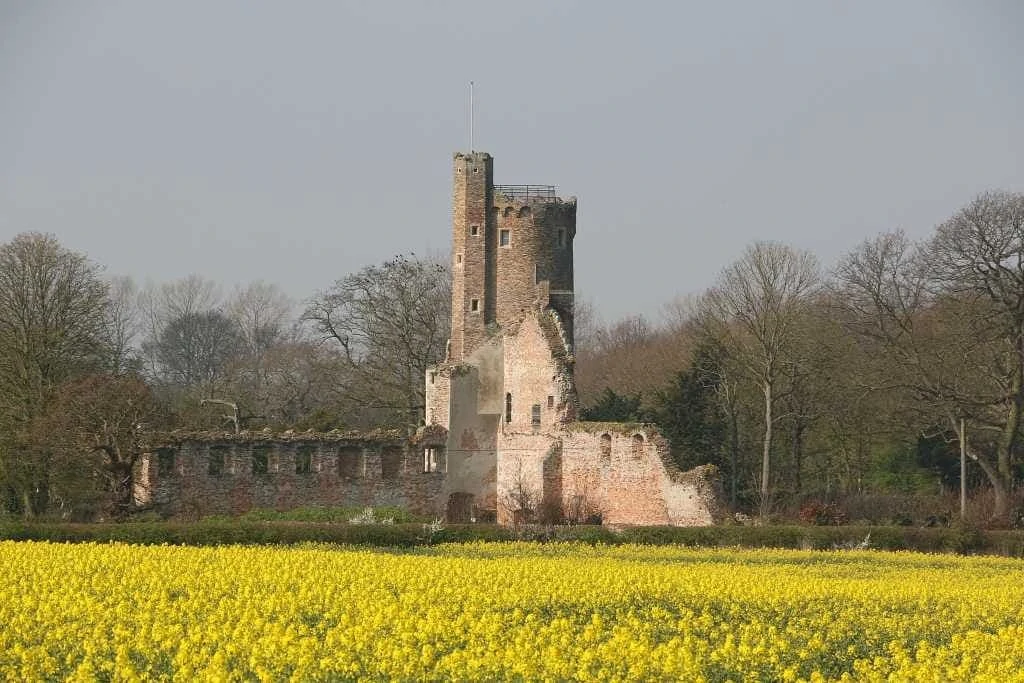
Situated in Norfolk parish of West Caister lies the gorgeous and historic Caister Castle; it is believed to have been constructed originally in the 15th century, between the years 1432 and 1446 by Sir John Fastolf, a prominent late Medieval landowner who inspired William Shakespeare’s ‘Falstaff’.
The castle saw a large amount of action and conflict during its prime, and it was heavily damaged during 1469 after the Duke of Norfolk captured and besieged it. Sadly, the castle fell into ruin and disrepair in the early 17th century, after a new manor house was built in the same vicinity. However, during this period, the original tower was maintained, and is still in a great condition and can be climbed by visitors.
Where: West Caister
When: 15th century
Style: Medieval
Open for visit: Yes, check here for more information.
4. Castle Acre Castle
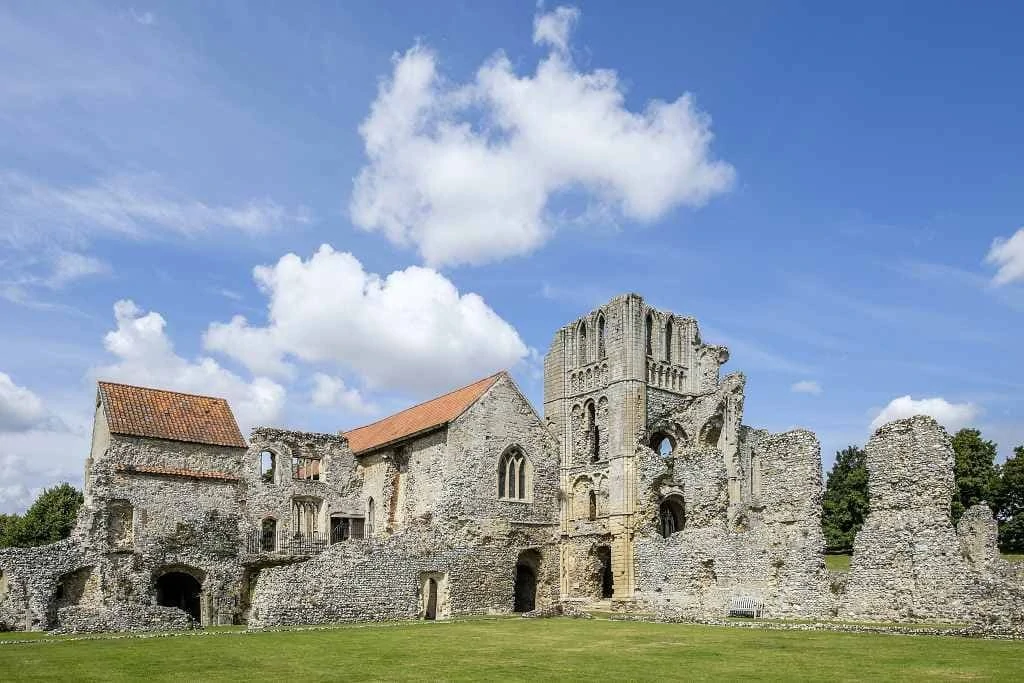
Castle Acre Castle was originally constructed during the aftermath of the Norman Conquest of England, around the 1070s by William de Warenne, who as the Earl of Surrey, and also had accompanied William the Conqueror during the conquest. The Castle Acre Castle is essentially a set of medieval defences that are in a ruined state, and are situated in the village of Castle Acre in Norfolk.
The architecture and structure are one of the most fascinating parts of this fantastic complex; visitors are captivated by the expansive size of the ruins, and how it transports you to an entirely different time and place. The castle is managed by the English Heritage and is considered to be one of the finest surviving defensive earthworks in the entirety of the country.
Where: Castle Acre
When: 1070s
Style: Medieval
Open for visit: Yes, check here for information.
5. Castle Rising Castle
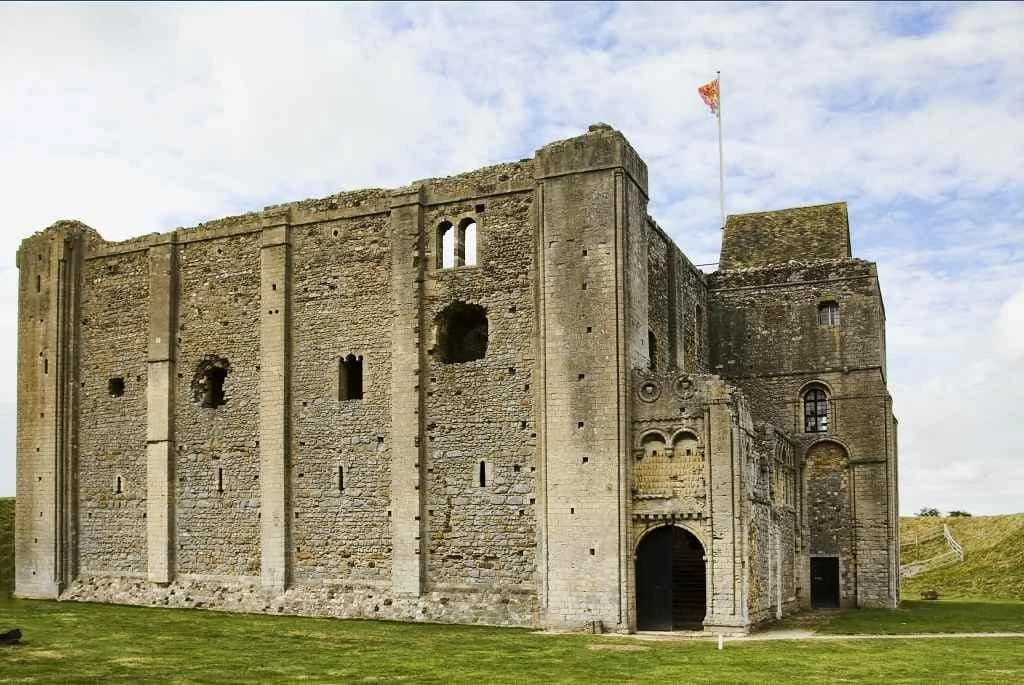
Castle Rising is an astonishing and incredibly well-preserved ruined medieval fortification situated in the scenic Norfolk village of Castle Rising.
The castle’s origins date back to around the year 1138, where it is believed to have been erected by William d’Aubigny II, who was a prominent English nobleman; he had become increasingly well-known during this time, and he used his wealth to construct the Castle Rising.
Throughout the following years, the castle switched hands and purpose on several occasions, such as a hunting lodge, before falling into disrepair during the 16th century. It was later renovated during the mid-20th century and has been a tourist attraction ever since
Where: Castle Rising
When: 12th century
Style: Medieval
Open for visit: Yes, check here for updated information.
6. Norwich Castle
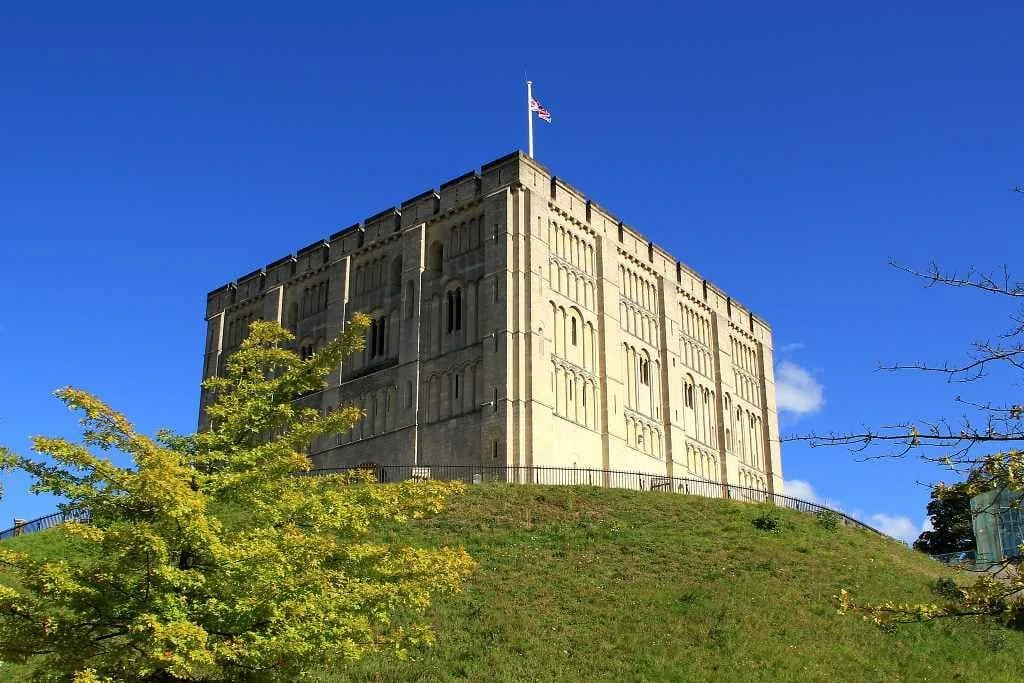
In the heart of the city of Norwich in Norfolk lies the fantastic and historic Norwich Castle, which is a royal fortification that dates back to the medieval period.
Though it is not certain as to the exact date in which Norwich Castle was constructed, it is known to have been built during the aftermath of the Norman Conquest of England in the 1060s, after William the Conqueror demanded its construction.
Over the centuries, Norwich Castle has served as many things, such as a prison to this day, the castle is a museum and an art gallery and it is open to the general public; it is one of the key tourist attractions Norwich.
Where: Norwich
When: 1060s
Style: Medieval
Open for visit: Yes, check here for more information.
7. Oxburgh Hall
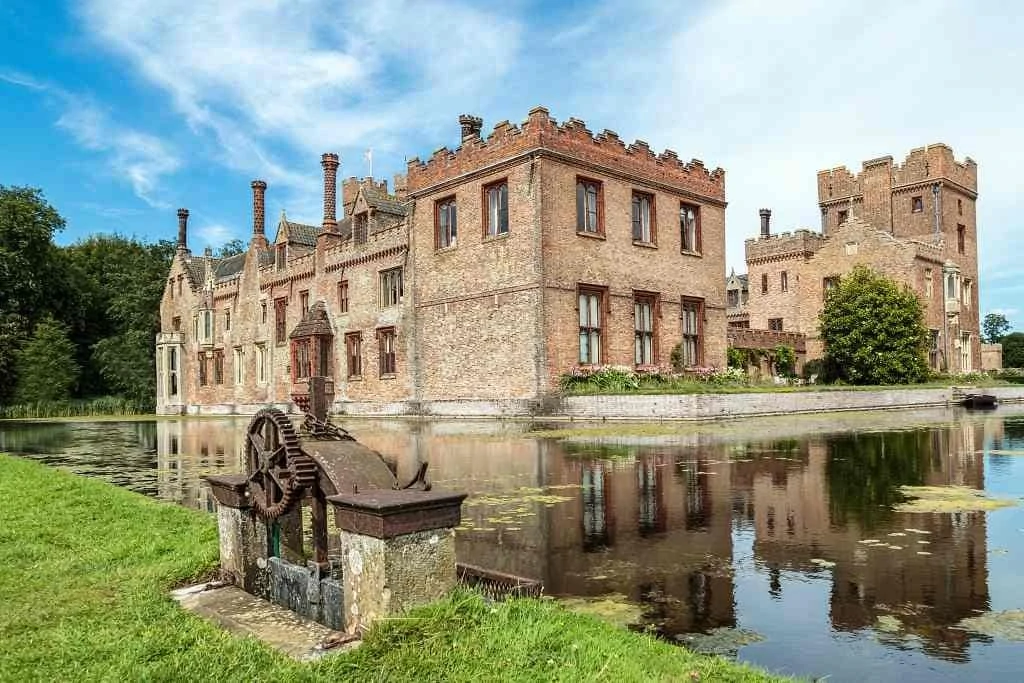
Oxburgh Hall is a fantastic historic moated country house that is situated in Oxborough in Norfolk; its origins date back to around the year 1482, whereby it was erected by Sir Edmund Bedingfield, who constructed it as a family home.
The hall is a prime example of late medieval architecture, with many of its original features still intact today; it is a Grade I listed building and is open to the general public. It is a key tourist attraction for the region and provides a fascinating insight into the past.
Where: Oxborough
When: 15th century
Style: Medieval
Open for visit: Yes, check here for information.
PIN IT!
